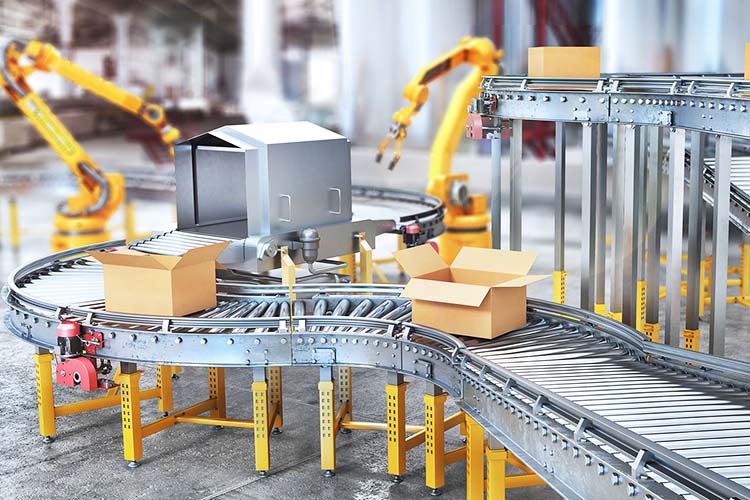خط بسته بندی شما واقعاً به چه میزان اتوماسیون نیاز دارد
با استفاده روزافزون از رباتیک و اتوماسیون در خطوط تولید، بخش های مختلف تولیدی قادر به کاهش هزینه ها، ارائه محصولات با کیفیت سازگارتر و افزایش حاشیه سود هستند. اما خط بسته بندی شما واقعاً به چه میزان اتوماسیون نیاز دارد؟
صرفاً حذف کارگران و نظارت از خط تولید همیشه منجر به کارایی بیشتر نمی شود. تولیدکنندگان باید الزامات خطوط تولید خود را برای انتخاب سطح مناسب اتوماسیون درک کنند. آیا تجهیزات بسته بندی نیمه اتوماتیک یا تمام اتوماتیک می توانند نیاز آنها را برآورده کنند؟
هنگام تصمیم به استفاده از دستگاه بسته بندی نیمه اتوماتیک یا تمام اتوماتیک در خط تولید خود، نیازهای عملیات بسته بندی خود را در رابطه با تعامل و مهارت های کارکنان، کیفیت، ایمنی، بهره وری و سودآوری بسنجید.
مزایای سطح اتوماسیون کامل
با پیاده سازی یک سیستم کاملاً خودکار، تولیدکنندگان می توانند نیروی کار زیادی را از خط تولید حذف کنند. این فرآیندها به ویژه برای استفاده در صنعت داروسازی و همچنین در صنعت گوشت و طیور مناسب هستند. بر اساس گزارش FDAnews، خطای انسانی نزدیک به 80 درصد از انحرافات در صنایع دارویی و تولیدی مرتبط را تشکیل می دهد. با خودکارسازی کامل خطوط تولید و کاهش تعاملات نیروی کار، داروسازان می توانند به بهبود چنین انحرافاتی ادامه دهند و رضایت مشتری را تضمین کنند.
علاوه بر این، خطوط تولید تمام اتوماتیک به اطمینان از ایمنی کارکنان در طبقه تولید کمک می کند. همانطور که طراحی تجهیزات اتوماسیون بهبود می یابد تا رابط های کارمندان ایمن تر را فراهم کند، کارمندان می توانند به طور فزاینده ای با تجهیزات بدون به خطر انداختن ایمنی تعامل داشته باشند و کارگران ماهر می توانند از راه دور با تجهیزات اتوماسیون تعامل داشته باشند. تجهیزات کاملاً خودکار می توانند به بهبود ایمنی کارکنان در خط تولید بدون به خطر انداختن کیفیت محصول کمک کنند.

مزایای سطح نیمه اتوماسیون
خطوط تولید نیمه خودکار جای خود را به مدلهای مشترکی میدهند که به رباتها و تجهیزات خودکار اجازه میدهد در کنار کارگران در طبقه تولید کار کنند. در حالی که خطای انسانی و نگرانی های ایمنی باید برای تعاملات کارکنان در خطوط بسته بندی در نظر گرفته شود، همچنین می تواند به تولیدکنندگان کمک کند تا انعطاف پذیری خطوط تولید خود را افزایش دهند.
همه برنامهها به سرعت بالا یا دقت موقعیتیابی یک سیستم بستهبندی کاملاً خودکار نیاز ندارند. گاهی اوقات، راهحلهای نیمه خودکار انعطافپذیری و مقرونبهصرفه بودن مناسب را ارائه میدهند.
این مدل فرصت بهبود مستمر در طول خط تولید را برای تولید روان و افزایش کارایی فراهم می کند. با این حال، امروزه چالش بزرگی که تولیدکنندگان در سراسر صنایع در ایالات متحده با آن روبرو هستند، جذب، توسعه و حفظ کارکنان ماهر است که ممکن است نیاز به گامهای بیشتری به سمت خطوط تولید کاملاً خودکار داشته باشد.
تفاوت بین اتوماسیون کامل و نیمه اتوماسیون
بسته به هدف خود، اتوماسیون کامل یا جزئی می تواند به تولیدکنندگان کمک کند تا به اهداف تجاری خود دست یابند. تفاوت بین این دو به یک عامل اصلی بستگی دارد: تعامل کارکنان. خطوط تولید کاملاً خودکار با مشارکت کمی کار می کنند، در حالی که خطوط تولید نیمه خودکار برای حفظ عملیات به برخی از رابط های کارمند متکی هستند.
بسته به شرایط، مزایا و معایبی دارد. هر دو عملیات نیمه اتوماتیک و تمام اتوماتیک دارای سابقه ثابتی در کاهش هزینه های تولید، افزایش سود و بهبود کیفیت محصول هستند. اینکه کدام خط بسته بندی را انتخاب کنید باید دقیقاً مطابق با وضعیت واقعی شما باشد.
Henan Top Packaging Machinery Co., Ltd یک ارائهدهنده راهحلهای بستهبندی پیشرو با تقریباً 30 سال سابقه است. امیدواریم بتوانید پاسخهایی را از تجهیزات بستهبندی ما بیابید.
